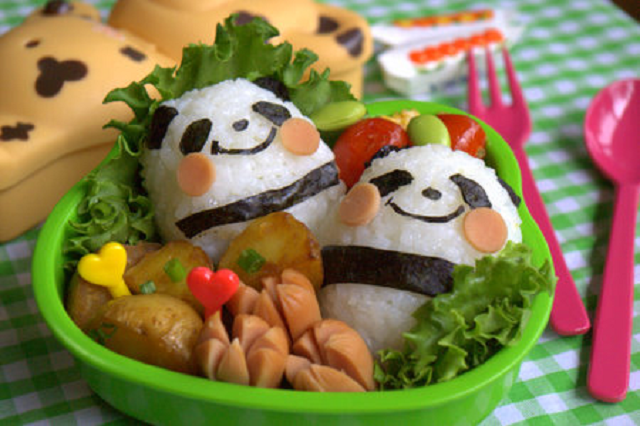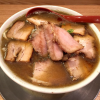
Preschool teacher says the Australian-style lunch she made was “not appropriate.”
When Catherine Taylor’s third child got old enough to start preschool, the Australian mother was living in Tokyo. Rather than send the boy off to an international school or other expat-oriented facility, she enrolled him in a normal Japanese preschool, where he was the only non-Japanese kid in the class.
It wasn’t long, though, until a major cultural difference cropped up, as Taylor recounts in a column for the Australian Broadcasting Corporation. One day, Taylor packed her son a fairly standard lunch, at least by Australian standards, with a Vegemite sandwich accompanied by sides such as a banana, cheese stick, carrot slices, and a muffin. However, when Taylor went to pick her son up, a teacher, who had taken a photo of her son’s lunch, told her that such fare simply wouldn’t do, saying “Sandwiches are not appropriate because they are not healthy.”
The teacher then went back to his phone’s photo album, explaining “These are some of the [lunches] that other children brought with them today” as he showed Taylor a series of Japanese-style bento boxed lunches. These weren’t just any bento, though, but chara-ben, “character bentos.”
▼ A chara-ben
鮮やか~☆キティちゃん。 pic.twitter.com/n92zLpPzIE
— 本気のキャラ弁☆画像集 (@honki_kyaraben) May 21, 2019
Chara-ben have become something of a cultural phenomenon in Japan over the past few years, with home chefs sharing snapshots of their creations on social media in which they take Japanese lunch staples like rice, omelets, sliced vegetables, and bite-sized meat morsels to create edible recreations of beloved children’s characters hailing from Studio Ghibli, Disney, Sanrio, or Pokémon franchises. “I thought the teacher was joking: it could not be possible that any parent would produce such a thing for a pre-schooler’s lunch,” says Taylor, but when she realized he was serious, however, she decided to learn how to make character bento, so as to match what her son’s classmates’ mothers were doing.
Luckily, she wouldn’t have to figure everything out on her own. Making cute bento is such an ingrained part of Japanese parenting that even discount 100 yen shops have molds, cutters, and other kitchen gadgets to help you get started. If you need help figuring out what to do with them, there are chara-ben YouTube videos, and if you want even more personal instruction, there are even chara-ben classes you can sign up for at community centers, which is the route Taylor took.
https://twitter.com/Aya____83/status/1130687326999367680As Taylor gained more experience, she found out that the reasons for visually appealing bento go beyond just Japan’s natural gravitation towards cute things. The standard logic is that a painstakingly crafted bento reflects a mother’s consideration and love for her child, and serves as an energy/morale booster during the mid-day meal at school. A variety of shapes, colors, and textures also keeps the eating experience fresh and fun, which encourages children to eat a variety of healthy foods and try new ones.
懐かしいキャラ弁発見❣️
— 福)モモンガ屋 (@Bunny_Rolla11) May 16, 2019
この頃はコテコテやってたけど、ここ最近毎日お弁当作ってるから、キャラ弁からは遠のいてる🙄
運動会あるから、その時は久しぶりにやってみるか?
………気が向いたらね😂#トトロ#キャラ弁 pic.twitter.com/Y7cRglvwBr
Taylor says that she was happy when she got to put her new chara-ben skills into practice, and that her son enjoyed receiving/eating them. However, she also worries about the stress and time cost for mothers, who already handle the vast majority of child-rearing responsibilities in Japan. Taylor estimates that all the cooking, slicing, and positioning that goes into a chara-ben can easily take a solid hour, and so even after learning how to make character bento, she still only did so “from time-to-time.”
It’s worth pointing out that despite the photos her son’s teacher had shown her as recommended lunches, most Japanese mothers don’t make chara-ben for their kids every day. Most simply make Japanese bento boxed lunches that look like ordinary food, and save the chara-ben hassle for special occasions. Some schools in Japan have even outright banned chara-ben, in the interest of keeping kids whose moms don’t have the time or skill to make them from feeling left out, as well as sparing kids who feel self-conscious about being the center of attention because their chara-ben is more artistic than their classmates.
On days when she didn’t make chara-ben for her son, Taylor doesn’t say if she prepared a standard Japanese-style bento, or an Australian lunch like the one that had drawn the teacher’s criticism in the beginning. However, she’s at least got the skills to whip up a chara-ben, though whether or not she has the time is a separate issue.
Source: ABC/ Catherine Taylor via Yuruku Yaru via Jin
Top image: Wikipedia/Torsodog
● Want to hear about SoraNews24’s latest articles as soon as they’re published? Follow us on Facebook and Twitter!

 Why are some Japanese preschools banning awesome, adorable character bento?
Why are some Japanese preschools banning awesome, adorable character bento? Awesome lunch boxes full of Disney’s Tsum Tsum characters are almost too cute to eat!【Photos】
Awesome lunch boxes full of Disney’s Tsum Tsum characters are almost too cute to eat!【Photos】 Japanese American tells of how she was teased in school, and the touching way her mom stepped up
Japanese American tells of how she was teased in school, and the touching way her mom stepped up Handmade Hayao Miyazaki bento is too cute to eat, great conversation starter during meals
Handmade Hayao Miyazaki bento is too cute to eat, great conversation starter during meals Foreigner’s request for help in Tokyo makes us sad for the state of society
Foreigner’s request for help in Tokyo makes us sad for the state of society Seaside scenery, history, and so many desserts on Yokohama’s Akai Kutsu【Japan Loop Buses】
Seaside scenery, history, and so many desserts on Yokohama’s Akai Kutsu【Japan Loop Buses】 Japanese city loses residents’ personal data, which was on paper being transported on a windy day
Japanese city loses residents’ personal data, which was on paper being transported on a windy day Should you add tartar sauce to Japanese curry rice? CoCo Ichi makes diners an unusual offer
Should you add tartar sauce to Japanese curry rice? CoCo Ichi makes diners an unusual offer Red light district sushi restaurant in Tokyo shows us just how wrong we were about it
Red light district sushi restaurant in Tokyo shows us just how wrong we were about it Historical figures get manga makeovers from artists of Spy x Family, My Hero Academia and more
Historical figures get manga makeovers from artists of Spy x Family, My Hero Academia and more Akihabara pop-up shop sells goods made by Japanese prison inmates
Akihabara pop-up shop sells goods made by Japanese prison inmates Tokyo ramen restaurant’s made-to-order noodles are only the beginning of its awesomeness
Tokyo ramen restaurant’s made-to-order noodles are only the beginning of its awesomeness Where are all the beautiful women in Japan? Survey investigates
Where are all the beautiful women in Japan? Survey investigates Japan’s massive matcha parfait weighs 6 kilos, contains hidden surprises for anyone who eats it
Japan’s massive matcha parfait weighs 6 kilos, contains hidden surprises for anyone who eats it McDonald’s new Happy Meals offer up cute and practical Sanrio lifestyle goods
McDonald’s new Happy Meals offer up cute and practical Sanrio lifestyle goods Japanese ramen restaurants under pressure from new yen banknotes
Japanese ramen restaurants under pressure from new yen banknotes French Fries Bread in Tokyo’s Shibuya becomes a hit on social media
French Fries Bread in Tokyo’s Shibuya becomes a hit on social media Studio Ghibli releases new action figures featuring Nausicaä of the Valley of the Wind characters
Studio Ghibli releases new action figures featuring Nausicaä of the Valley of the Wind characters New private rooms on Tokaido Shinkansen change the way we travel from Tokyo to Kyoto
New private rooms on Tokaido Shinkansen change the way we travel from Tokyo to Kyoto Tokyo Tsukiji fish market site to be redeveloped with 50,000-seat stadium, hotel, shopping center
Tokyo Tsukiji fish market site to be redeveloped with 50,000-seat stadium, hotel, shopping center All-you-can-drink Starbucks and amazing views part of Tokyo’s new 170 meter-high sky lounge
All-you-can-drink Starbucks and amazing views part of Tokyo’s new 170 meter-high sky lounge Beautiful Ghibli sealing wax kits let you create accessories and elegant letter decorations【Pics】
Beautiful Ghibli sealing wax kits let you create accessories and elegant letter decorations【Pics】 Studio Ghibli releases Kiki’s Delivery Service chocolate cake pouches in Japan
Studio Ghibli releases Kiki’s Delivery Service chocolate cake pouches in Japan New definition of “Japanese whiskey” goes into effect to prevent fakes from fooling overseas buyers
New definition of “Japanese whiskey” goes into effect to prevent fakes from fooling overseas buyers Our Japanese reporter visits Costco in the U.S., finds super American and very Japanese things
Our Japanese reporter visits Costco in the U.S., finds super American and very Japanese things Studio Ghibli unveils Mother’s Day gift set that captures the love in My Neighbour Totoro
Studio Ghibli unveils Mother’s Day gift set that captures the love in My Neighbour Totoro More foreign tourists than ever before in history visited Japan last month
More foreign tourists than ever before in history visited Japan last month New Pokémon cakes let you eat your way through Pikachu and all the Eevee evolutions
New Pokémon cakes let you eat your way through Pikachu and all the Eevee evolutions Sales of Japan’s most convenient train ticket/shopping payment cards suspended indefinitely
Sales of Japan’s most convenient train ticket/shopping payment cards suspended indefinitely Sold-out Studio Ghibli desktop humidifiers are back so Totoro can help you through the dry season
Sold-out Studio Ghibli desktop humidifiers are back so Totoro can help you through the dry season Japanese government to make first change to romanization spelling rules since the 1950s
Japanese government to make first change to romanization spelling rules since the 1950s Ghibli founders Toshio Suzuki and Hayao Miyazaki contribute to Japanese whisky Totoro label design
Ghibli founders Toshio Suzuki and Hayao Miyazaki contribute to Japanese whisky Totoro label design Doraemon found buried at sea as scene from 1993 anime becomes real life【Photos】
Doraemon found buried at sea as scene from 1993 anime becomes real life【Photos】 Tokyo’s most famous Starbucks is closed
Tokyo’s most famous Starbucks is closed One Piece characters’ nationalities revealed, but fans have mixed opinions
One Piece characters’ nationalities revealed, but fans have mixed opinions We asked a Uniqlo employee what four things we should buy and their suggestions didn’t disappoint
We asked a Uniqlo employee what four things we should buy and their suggestions didn’t disappoint Princesses, fruits, and blacksmiths: Study reveals the 30 most unusual family names in Japan
Princesses, fruits, and blacksmiths: Study reveals the 30 most unusual family names in Japan Cute ekiben station bento looks like it’s from Japan but it’s from a different place entirely
Cute ekiben station bento looks like it’s from Japan but it’s from a different place entirely Makeup artist transforms herself into amazing likenesses of famous oil paintings, celebrities
Makeup artist transforms herself into amazing likenesses of famous oil paintings, celebrities Voice actress surprises the internet with her bento making skillz!【Photos】
Voice actress surprises the internet with her bento making skillz!【Photos】 Korean makeup artist transforms herself into Taylor Swift in mind-blowing makeup tutorial 【Video】
Korean makeup artist transforms herself into Taylor Swift in mind-blowing makeup tutorial 【Video】 Japanese bento shop becomes a hot topic with foreigners on Reddit, but is it any good?
Japanese bento shop becomes a hot topic with foreigners on Reddit, but is it any good? Japanese dad turns daughter’s illustration into her bento lunch
Japanese dad turns daughter’s illustration into her bento lunch Mom asks mecha anime staff to add scenes of kid going to the bathroom for her son’s sake
Mom asks mecha anime staff to add scenes of kid going to the bathroom for her son’s sake Mother’s note to son in the final bento of his high school life gives Twitter the feels
Mother’s note to son in the final bento of his high school life gives Twitter the feels Japanese woman asks for advice on how to deal with smell of son’s corpse, gets arrested
Japanese woman asks for advice on how to deal with smell of son’s corpse, gets arrested Why settle for a bento box, when you can have a full-on bento backpack?
Why settle for a bento box, when you can have a full-on bento backpack? 5 powerful reasons to be a woman in Japan 【Women in Japan Series】
5 powerful reasons to be a woman in Japan 【Women in Japan Series】 Tokyo likely to reduce age limit on kids in opposite-sex public baths, report says
Tokyo likely to reduce age limit on kids in opposite-sex public baths, report says Japanese advice columnist shuts down mother who doesn’t want to give son permission to marry
Japanese advice columnist shuts down mother who doesn’t want to give son permission to marry Official Sailor Jupiter bento boxed lunches being served now at Tokyo anime-themed cafe 【Photos】
Official Sailor Jupiter bento boxed lunches being served now at Tokyo anime-themed cafe 【Photos】
Leave a Reply